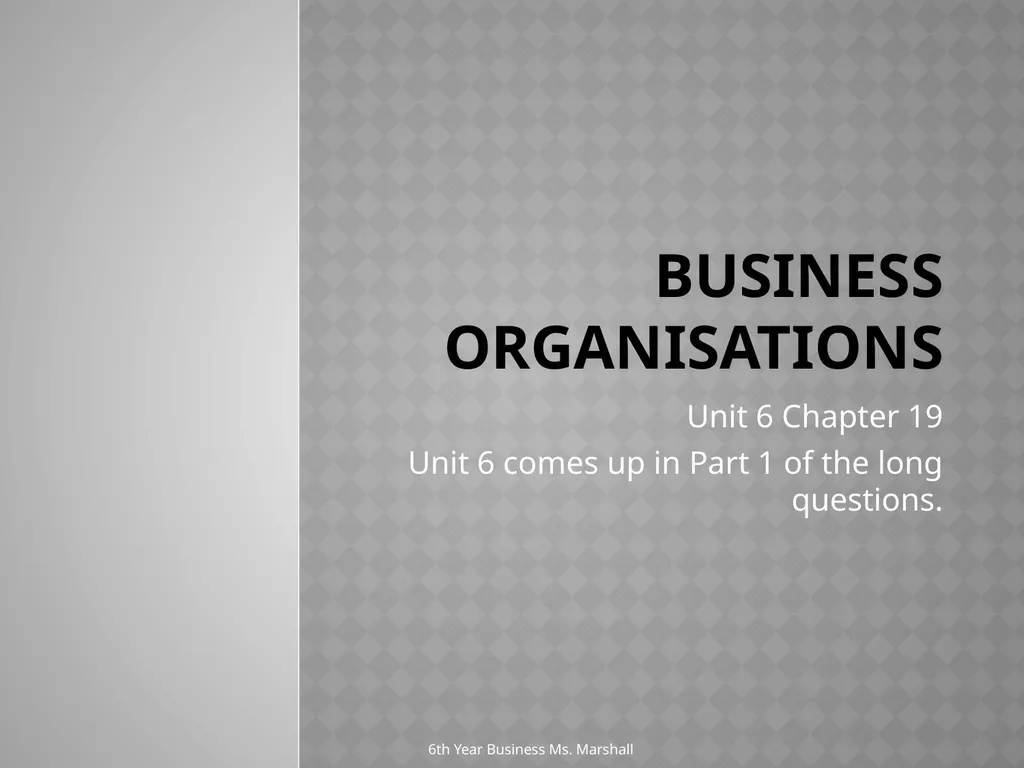
Business Organisations Unit 6 Chapter 19 Unit 6
Author: liane-varnes | Published: 2025-05-28
Description: Business Organisations Unit 6 Chapter 19 Unit 6 comes up in Part 1 of the long questions. 6th Year Business Ms. Marshall 6th Year Business Ms. Marshall Types of Organisations Sole Trader Indigenous Firm Partnership Private Limited Co.
Download Presentation
Download the PPT/PDF: Download
Transcript:
Loading transcript…